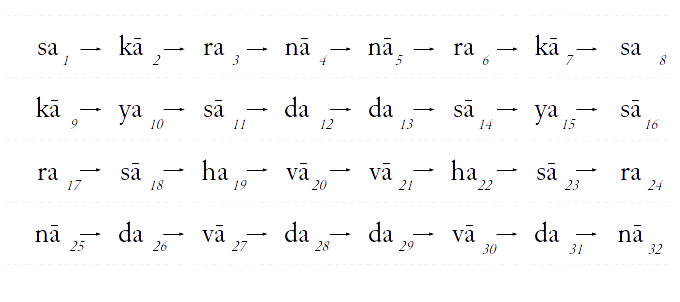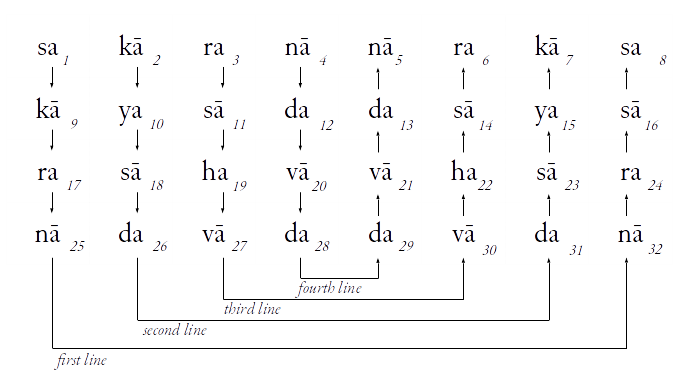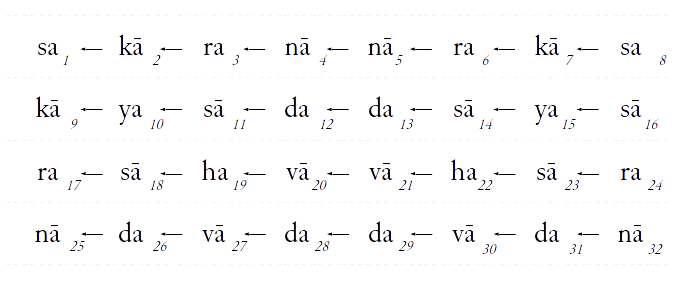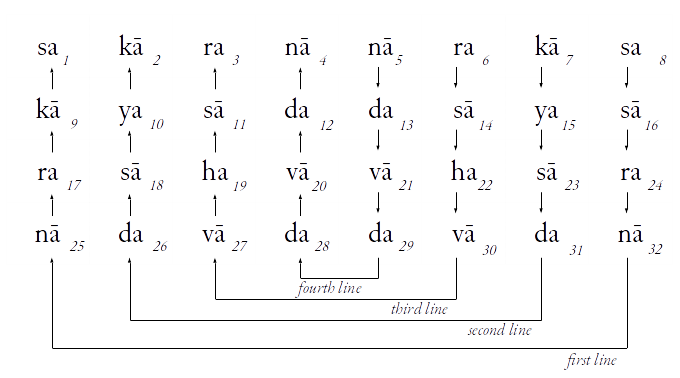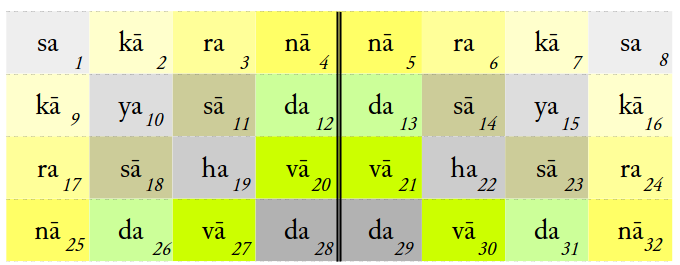A section of the second chapter of Śrīvijaya’s Way of the Poet-King (Kavirājamārgaṁ) discusses citrakāvya, “pattern-poetry,” and in preparation for reading it, I have started to give myself a crash course in citrakāvya. The first topic is what is usually called gaticitra, wherein a poem is generated by particular movement (gati-) through a particular matrix of syllables. Typically the movement of reading is one-dimensional: we move from one syllable to the next, always in the same direction (in Sanskrit, left to right). This kind of reading can be called linear, or unilinear. The point of gaticitra is to introduce alternative ways of moving through a text.
The ardhabhrama-, “half-turning,” involves constructing a verse such that one can read the same text in two movements. The first movement is the one by which we generally read verses of four lines: we start at the leftmost syllable of the first line, and then move, syllable by syllable, to the right, until we have reached the end of the eight-syllable line, and then we jump to the leftmost syllable of the second line and repeat the process. In the second movement, we read the first syllable of each of the four lines in succession, and then the last syllable of the four lines in reverse order
Here is an example from Māgha’s Killing of Śiśupāla (Śiśupālavadhaḥ 19.72):
abhīkamatikēnēddhē
bhītānandasya nāśanē
kanatsakāmasēnākē
mandakāmakamasyati
Here is Paul Dundas’ translation, from his recently-published translation in the Murty Classical Library of India:
The struggle caught fire among fearless fighters and extinguished the comfort of cowards; triumphant warriors basked in its glow, the uncommitted had no place there.
The following diagram, based on the one in Kalanath Jha’s Figurative Poetry in Sanskrit Literature (Delhi 1975), shows the second, “half-turning” movement:
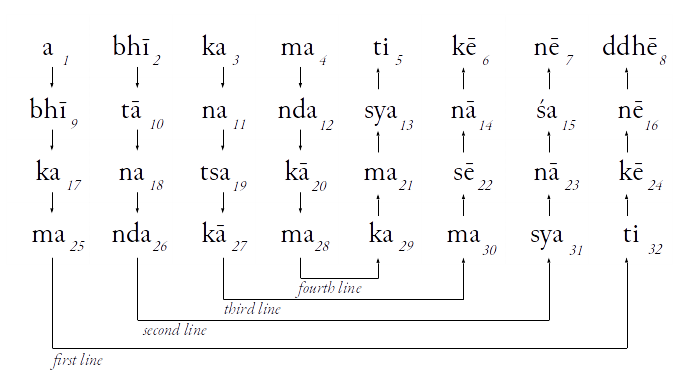
In this diagram, I have labelled all of the syllables according to their position in the unilinear movement. By reference to these labels, we can say that the first line is represented in the case of linear movement by 1, 2, 3, 4, 5, 6, 7, 8, and in the case of the “half-turning” movement by 1, 9, 17, 25 (the descent along the first syllable of each line), 32, 24, 16, 8 (the ascent along the last syllable of each line). Similarly, the second line is represented by 9, 10, 11, 12, 13, 14, 15, 16 in the first case, and 2, 10, 18, 26, 31, 23, 15, and 7 in the second case. And so on. We can equate the two movements by representing one (say the unilinear movement) as the x-axis and the other (the half-turning movement) as the y-axis in the following chart:
A question that lays beyond my expertise is whether the positions occupied by the half-turning movement can be described as a function of the unilinear movement: since the lines are only eight syllables long, this function has a somewhat periodic appearance in the above diagram. The simultaneity of movement requires the syllables in corresponding positions in each movement to be identical to each other, and if we color-code the identical syllables, we arrive at the following diagram:
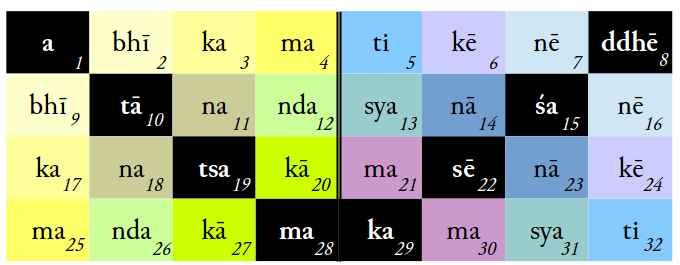
From this we can see that, if χ represents the line (1, 2, 3 or 4), then positions 8(χ-1)+χ and (8χ+1)-χ (i.e., 1 and 8, 10 and 15, etc.) are unique, and are the only positions that do not need to be matched with another position. These unique positions make up two axes, one cutting a 4 × 4 square from northwest to southeast, and the other cutting the next 4 × 4 square from southwest to northeast. If we were to fold these squares — representing the first four and last four positions, respectively, in each line — along these axes, then each position would be identical to the one that it is folded against. The squares are, in other words, axially symmetrical. This symmetry will turn out to be important when we are trying to determine the text of a particular ardhabhrama verse from corrupt manuscript readings.
